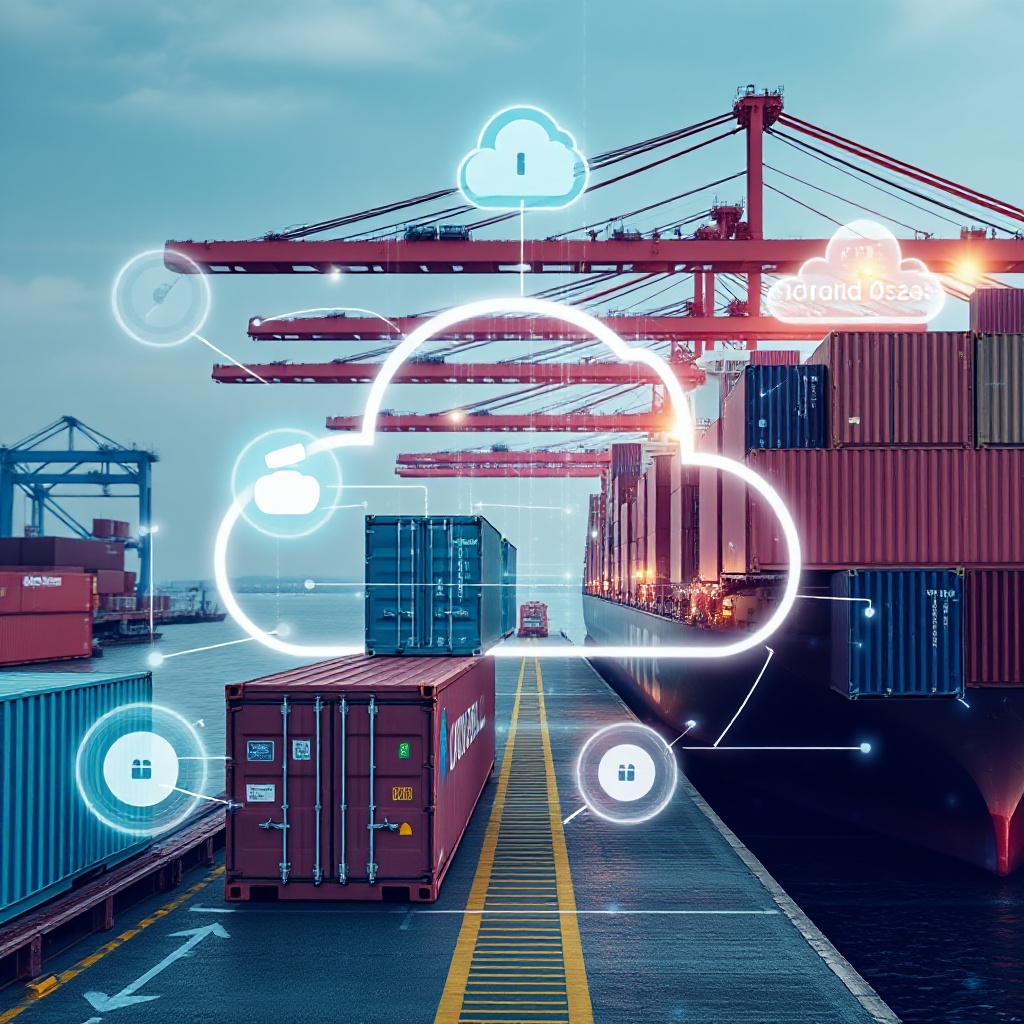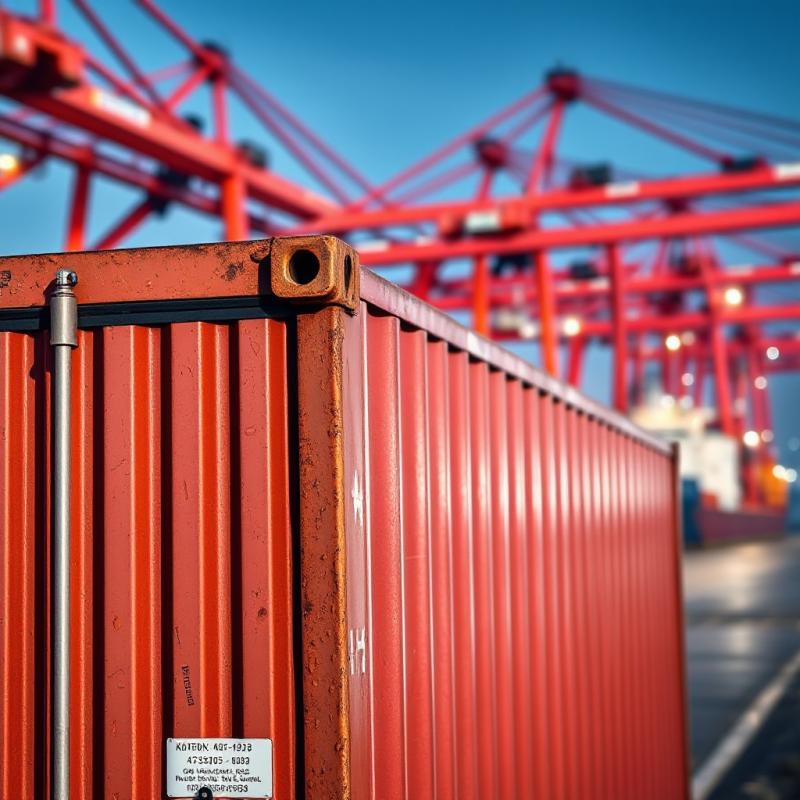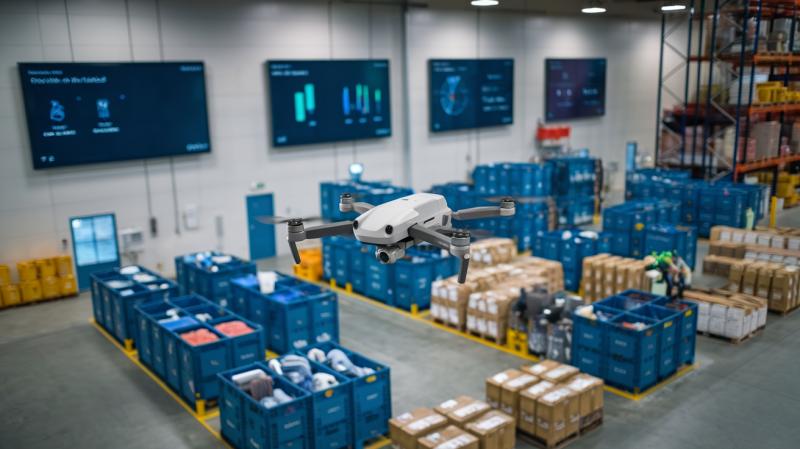
IoT-powered transportation management systems are helping companies navigate supply chain disruptions with real-time tracking and AI-driven insights.

Drivetech Partners
In 2025's global commerce landscape, real-time IoT-based tracking and management systems have become essential infrastructure helping businesses respond to unprecedented supply chain challenges. From "Liberation Day" supply chain uncertainties to unexpected disruptions like the 2021 Suez Canal blockage, companies are leveraging sophisticated Transportation Management Systems (TMS) enhanced with Internet of Things (IoT) capabilities to gain visibility, agility, and competitive advantages in increasingly unpredictable markets.
Key Takeaways
The global TMS market is expected to nearly double to $31 billion by 2025, reflecting growing demand for advanced supply chain solutions
IoT sensors provide instant tracking of goods, monitoring location, temperature, and humidity during transit, reducing waste and improving efficiency
Zara's RFID implementation across 2,000 stores demonstrates how IoT-powered inventory management can reduce costs by 20% while improving operational speed
During disruptions like the Suez Canal blockage, companies with advanced TMS capabilities could quickly reroute shipments and minimized impacts
Integration of AI with IoT data streams creates comprehensive supply chain intelligence, enabling better forecasting and automated decision-making
CSPs are evolving IoT solutions to embrace TMS

The Integration of IoT in Modern Transportation Management Systems
Transportation Management Systems have transformed from simple logistics tools into comprehensive supply chain platforms powered by IoT technologies. These systems now incorporate product tracking, inventory management, real-time routing, dynamic scheduling, container management, and shipment monitoring capabilities that provide unprecedented visibility and control.
IoT sensors attached to shipments, vehicles, and containers create a digital nervous system throughout the supply chain. These sensors constantly transmit critical real-time data about location, temperature, humidity, and other conditions during transit. This information allows companies to monitor product quality, predict arrival times accurately, and quickly respond to potential problems.

Smart IoT devices have also revolutionized inventory management by automating tracking processes. This automation reduces manual errors while improving accuracy and efficiency. Companies can now maintain optimal inventory levels, reducing carrying costs while ensuring product availability.
Another significant advantage is IoT-enabled predictive maintenance. By monitoring equipment conditions in real-time, companies can identify potential failures before they occur, scheduling maintenance during convenient times rather than dealing with costly emergency repairs that disrupt operations.
Digital Twin Technology represents one of the most sophisticated applications of IoT in transportation management. This technology creates virtual replicas of supply chains, allowing companies to model different scenarios, forecast outcomes, and plan accordingly. Leading TMS providers including Blue Yonder, SAP, and Oracle have incorporated these capabilities into their platforms.
Case Study: Zara's Strategic Advantage Through IoT-Powered Inventory Management
Fashion retailer Zara provides a compelling example of how IoT technology can transform supply chain operations. The company has implemented a RAIN RFID system across 2,000 stores in 64 countries, creating one of the world's largest IoT-powered inventory management networks.
This system provides stock updates every two hours, dramatically reducing errors and ensuring accurate supply levels across the company's global operations. The technology tracks items from manufacturing through distribution and in-store placement, maintaining precise real-time inventory data throughout the product lifecycle.
The business benefits have been substantial. Zara has reduced inventory costs and lowered waste by up to 20% through data-driven demand forecasting. The efficiency gains are equally impressive - inventory tasks that once required 40 employees and five hours are now completed by just 10 employees in half the time.
Perhaps most importantly, this system provides Zara with exceptional resilience against supply chain disruptions and tariff challenges. The company can quickly identify inventory imbalances, redirect products between locations, and adjust ordering patterns based on emerging market conditions - capabilities that prove invaluable during trade disputes and supply chain crises.
Critical TMS Features for Managing Supply Chain Disruptions
Modern Transportation Management Systems offer several key features specifically designed to help companies navigate supply chain disruptions:
Predictive Analytics capabilities identify shipment delays, port congestion, or rate hikes in advance, allowing proactive responses
Route and Load Optimization technologies dynamically recalculate efficient routes based on traffic, capacity, and fuel prices
Multi-Carrier Rate Comparison tools display real-time rates from multiple carriers, balancing cost against delivery speed
Emission and Sustainability Tracking calculates CO₂ emissions per shipment and recommends greener options
Open APIs and SDKs allow companies to create customized solutions for their specific needs
These capabilities are increasingly delivered through cloud-based platforms that leverage AI to interpret data from complex indicators. This technology combination enables more sophisticated supply chain strategies that can quickly adapt to changing conditions - critical in an era of tariff uncertainty and frequent disruptions.
Lessons from the 2021 Suez Canal Blockage: IoT as a Risk Mitigation Tool
The 2021 Suez Canal blockage, when the container ship Ever Given became wedged across the vital waterway for six days, provided a real-world test of IoT-enabled TMS capabilities. Companies with advanced tracking systems gained significant advantages during this crisis.
Organizations with real-time tracking capabilities could immediately identify which shipments were affected by the blockage. This visibility allowed them to quickly reroute critical cargo via alternative shipping methods or routes, minimizing disruption impacts on their operations.
Predictive analytics played a crucial role in identifying viable alternative shipping routes and methods. Companies could evaluate different scenarios based on cost, transit time, and capacity constraints to make optimal decisions under unprecedented conditions.
IoT visibility tools also enabled better communication with customers about delays and alternative plans. The ability to provide accurate, timely information helped maintain customer trust during a challenging period and allowed downstream businesses to adjust their own operations accordingly.
The lessons learned from this incident have driven improvements in contingency planning and system resilience. Many companies have since enhanced their TMS capabilities to provide better visibility and more flexible response options for future disruptions.

The 2025 Trump Tariff Impact: Strategic TMS Solutions for CSPs and OEMs
The resurgence of tariff uncertainties in 2025 has created new challenges for supply chain managers. IoT-based TMS systems enable rapid supply chain reconfiguration to mitigate tariff impacts, providing critical flexibility in an uncertain trade environment.
For Communication Service Providers (CSPs), this creates opportunities to enhance service offerings with IoT capabilities. Leading CSPs are developing specialized solutions that integrate connectivity, data management, and analytics to help clients track and manage international shipments subject to changing tariff regulations.
Original Equipment Manufacturers (OEMs) face their own set of challenges, including potential disruptions to component sourcing and finished product distribution. Advanced TMS implementation helps these companies model different scenarios, identify alternative suppliers, and adjust production schedules to minimize tariff exposure while maintaining operational continuity.
Companies successfully navigating tariff challenges typically use TMS systems to create a digital map of their entire supply network. This visibility allows them to quickly analyze the impact of new tariffs and identify the most cost-effective responses, whether shifting production locations, changing sourcing strategies, or adjusting inventory positioning.
AI-Powered Supply Chain Intelligence: The Next Frontier
Artificial intelligence represents the next evolution in transportation management, working alongside IoT systems to create unprecedented supply chain capabilities. AI optimizes logistics, forecasts demand, and manages inventory to enhance decision-making quality and speed.
AI-driven forecasting enables companies to procure the right quantity of materials at the right time, reducing waste and improving capital efficiency. These systems analyze historical data alongside current market conditions to identify patterns and predict future needs with increasing accuracy.
In transportation management, AI-powered algorithms streamline routes, reduce delivery times, and minimize fuel consumption. These systems can continuously optimize operations based on real-time conditions, making adjustments that would be impossible for human managers to implement at scale.
The integration of AI with IoT data streams creates comprehensive supply chain intelligence far beyond what either technology could provide alone. IoT provides the real-time data capture while AI transforms this data into actionable insights, creating a powerful combination for supply chain managers facing complex challenges.
Future-Proofing Supply Chains: Strategic Technology Adoption for Resilience
As companies plan for future supply chain resilience, they must address several key challenges. Capacity constraints, including driver shortages that have returned to 2018 levels, create significant delivery bottlenecks that technology can help manage.
Cost pressures pushing toward double-digit increases demand more efficient operations. Advanced TMS systems help identify cost-saving opportunities through route optimization, carrier selection, and load consolidation while maintaining service levels.
Consumer and business expectations for granular, real-time location tracking continue to grow. Meeting these demands requires sophisticated tracking infrastructure that provides accurate, timely information throughout the transportation process.
Leading companies are forming strategic partnerships with TMS suppliers to gain competitive advantages. For example, Werner Enterprises has partnered with Mastery Logistics Systems to enhance its technological capabilities and service offerings.
The future clearly belongs to organizations that diversify their supply chain networks while leveraging synergistic technologies. The growing adoption of predictive analytics, automation, real-time tracking, machine learning, and blockchain creates resilient, adaptive supply chains capable of withstanding even severe disruptions.
Sources
Surgere - Top Supply Chain Trends for 2025: Embracing the Digital Transformation
LLCBuddy - Transportation Management Systems Statistics
ABI Research - COVID Supply Chain Challenges Prompt Technology Investment






